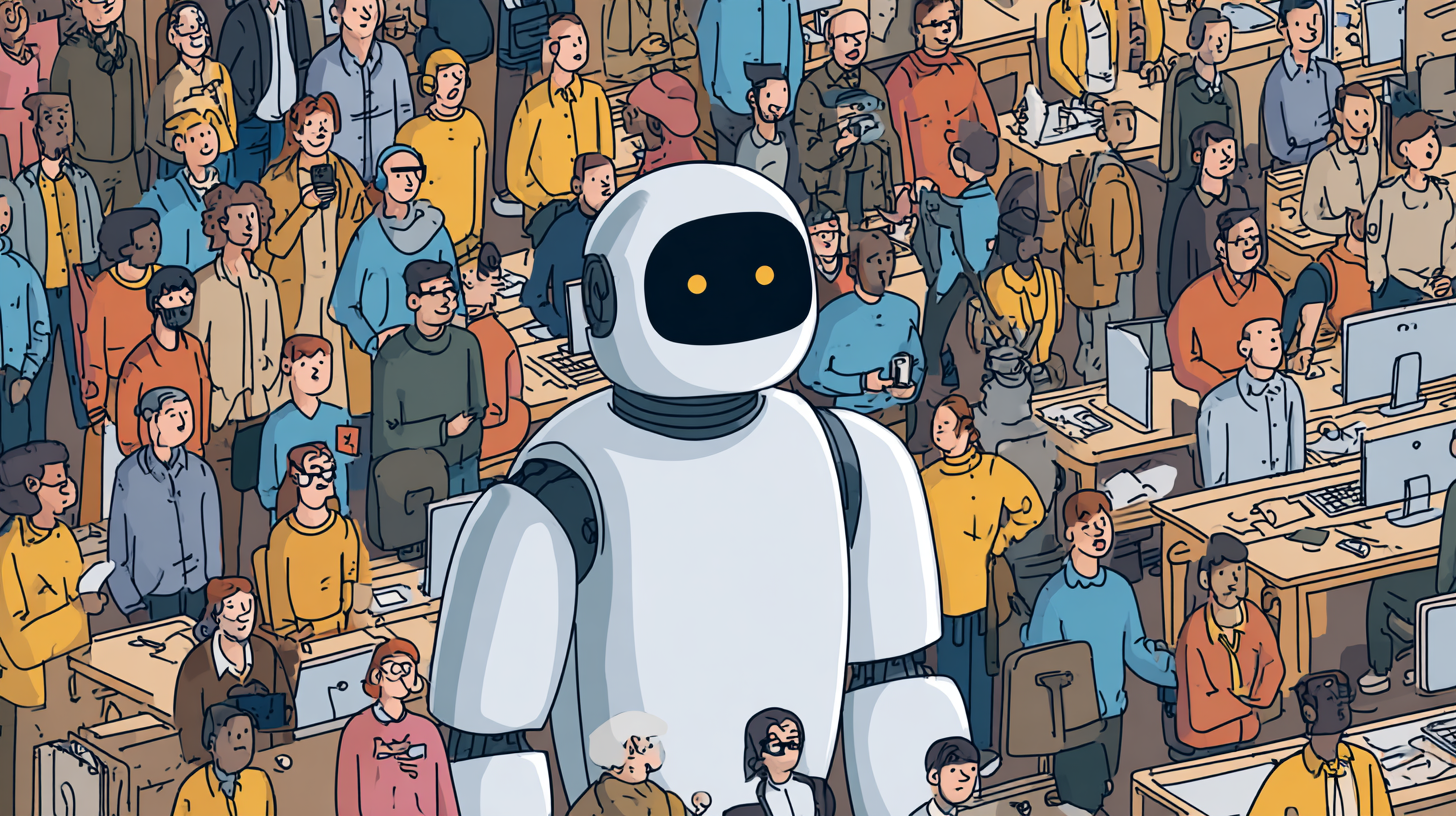The other night, after a long day of doomscrolling (and, let’s be real, stress-ordering sushi), I stumbled across a Reddit prompt for ChatGPT that quite literally shifted how I learn things online. I’d always suspected there was more to making ChatGPT useful than just firing off a lazy question, but I hadn’t realized just how much the right prompt could launch my entire research rabbit-hole. If you’ve ever gotten a bland, Wikipedia-like reply from ChatGPT, trust me—you haven’t seen what it can do when pressed with a thoughtfully crafted prompt. Here’s the wild way a single viral prompt turned my learning sessions into something way more interactive (and, dare I say, fun).
Why Most ChatGPT Answers Are So Boring (And How I Learned to Change That)
Let’s be honest—most of us have typed a quick question into ChatGPT, only to get a bland, copy-paste style answer. My first tries were no different. I’d ask something like, “What are frogs in Scotland?” and get a handful of surface-level facts. It felt like reading a Wikipedia summary, not a real conversation. That’s when it hit me: the problem wasn’t ChatGPT itself, but the way I was prompting it.
Research shows that Prompt Engineering is crucial for unlocking the real value of AI Learning Tools like ChatGPT. Vague prompts lead to generic answers, but well-crafted ChatGPT Prompts can turn the experience around. As John-Anthony Disotto put it:
“The usefulness of AI chatbots like ChatGPT really hinges on the prompts you provide.”
Everything changed when I stumbled upon what Reddit user u/AzAI-W called the “best learning prompt.” This wasn’t just another Effective AI Prompt—it was a total game changer. Instead of tossing out a single question, you paste in a structured prompt that tells ChatGPT exactly how to respond. Suddenly, the answers weren’t just more detailed—they were interactive and customizable. I could dive deeper, ask for more, or steer the conversation in any direction I wanted.
For example, when I tried this with “frog species in Scotland,” ChatGPT didn’t just list facts. It offered a structured breakdown, let me choose between basic or specialized info, and even allowed me to expand on any section with a simple “more.” It felt like I was guiding my own mini-course, not just reading a static article.
It’s clear: engineered prompts are the secret sauce for making ChatGPT truly useful. If you want richer, more engaging answers, it all starts with how you ask.
The Game-Changing Prompt: Turning ChatGPT Into My Personal Encyclopedia
Let me tell you about the single best Prompt Engineering Technique I’ve stumbled across for ChatGPT. I found it on Reddit, thanks to u/AzAI-W, and it’s honestly changed how I approach learning with AI. Instead of tossing a vague question at ChatGPT and hoping for the best, this prompt is designed to turn the chatbot into your own personal encyclopedia—one that’s interactive, detailed, and totally under your control.
The magic lies in its structure. The prompt uses a variable (let’s call it M) for any topic you want to explore. You get to decide: do you want a basic overview, or are you ready for a deep-dive? Just type “1” for Basic Information or “2” for Specialized Information. If you’re like me and love to go down rabbit holes, you’ll appreciate how typing “more” or picking subtopics lets you keep drilling deeper. It’s almost like a choose-your-own-adventure, but for learning. This is what makes it such an Effective AI Prompt.
The prompt splits ChatGPT’s output into two clear sections:
- Basic Information: A structured intro and general highlights about your chosen topic.
- Specialized Information: Academic-level detail, including fan opinions, backstories, real-life anecdotes, and subtopics you select. You can keep expanding or narrowing the focus as much as you want.
What’s wild is how much control you have. As John-Anthony Disotto put it:
“You have control at every step—you can ask for more specialized content, request further breakdowns... or go back to ‘Basic Information’ with a simple ‘1’.”
Research shows that AI Educational Experiences like this can be truly transformative. With the right prompt, ChatGPT becomes more than a chatbot—it’s a custom GPT model, tailored to your curiosity and learning style.
A Tale of Frogs (And How My Learning Got a Makeover)
Let me tell you about the moment my approach to AI learning tools changed forever—thanks to a single, cleverly engineered prompt. I was curious about “frog species in Scotland,” a topic that, let’s be honest, usually gets you a bland info-dump or a Wikipedia-style list. But this time, I used a viral prompt I’d seen on Reddit, and suddenly, my ChatGPT interactions felt completely different.
Instead of the usual generic summary, ChatGPT offered me a structured profile for each frog species, deep dives into their habitats, and links to related subtopics. I could choose between “Basic Information” for a quick overview, or go for “Specialized Information” to get academic-level detail. If I wanted more, all I had to do was type “more,” and the AI would expand on the section or break down subtopics even further. It was like having a personal tutor who not only answered my questions, but also anticipated the ones I hadn’t even thought to ask.
This wasn’t just a lucky fluke. The prompt’s design is what made the difference. It forced ChatGPT to stay laser-focused on delivering information, rather than drifting into meta advice or article suggestions. As John-Anthony Disotto put it,
“The engineered prompt turned the interaction into a glossary-like, structured exploration.”
Research shows that crafting effective AI prompts is essential for deeper understanding. With this approach, I could direct my own learning journey, exploring frog habitats, behaviors, and even conservation efforts—all within one conversation. It felt interactive, almost playful, and miles away from the static, textbook feel I’d come to expect from most AI chatbot interactions.
If you’re looking to get more from your AI learning tools, experimenting with prompt engineering is a game changer. For me, it turned a simple question about Scottish frogs into an engaging, personalized adventure in learning.
Wild Card: If AI Were a Dinner Guest, How Would You Keep the Conversation Lively?
Let’s play with an analogy: Imagine inviting ChatGPT to your trivia night. Now, picture only asking it yes/no questions—pretty dull, right? The room would go quiet, and you’d probably start checking your phone. But if you toss ChatGPT an open-ended, layered prompt, suddenly it’s like the most interesting guest at the table. People are leaning in, waiting for its quirky, sometimes surprisingly passionate, answers. That’s the magic of AI Chatbot Interactions—they come alive when you ask the right questions.
Honestly, I used to treat ChatGPT like a magic mirror. I’d ask a quick question, get a generic answer, and move on. But after discovering that viral learning prompt (shoutout to u/AzAI-W on Reddit and TechRadar for spotlighting it), my approach changed completely. Now, I see prompt engineering as the secret sauce. When I give ChatGPT a detailed, context-rich prompt, it responds with depth and nuance—almost like it’s collaborating with me, not just spitting out facts.
It’s kind of like talking to a new friend. If you only ask them, “Did you have a good day?” you’ll get a simple yes or no. But if you ask, “What’s the most unexpected thing that happened to you today?”—that’s when the real stories come out. Prompt Engineering works the same way. The better you engage, the better the outcome.
Research shows that user experiences with ChatGPT vary widely, and the difference often comes down to the quality of prompts. Many users, myself included, have found that a thoughtful, structured prompt can turn a basic interaction into a dynamic, personalized learning session. It’s not just about asking—it’s about how you ask. Treat ChatGPT like a partner in conversation, and you’ll be amazed at what unfolds.
The Ripple Effect: How Better Prompts Can Unlock More (And My Unfiltered Thoughts)
Ever since I started using this engineered prompt, my approach to AI chatbot interactions has completely changed. Instead of wasting hours scrolling through endless forums or sifting through generic answers, I’m actually learning—deeply and efficiently. Prompt-building has become a daily ritual for me, right up there with my morning coffee (and, yes, my slightly embarrassing habit of checking anime news).
What’s wild is how this simple shift in prompt engineering has ripple effects far beyond just learning new facts. For example, I’ve started using ChatGPT as a keyword research tool, generating lists and analyzing search trends with way more precision than before. It’s also made me curious about custom GPT models—imagine having an AI that’s tailored to your specific needs, whether you’re a student, a writer, or even an anime fan. Research shows that these custom models are on the rise, promising even more personalized AI learning tools in the near future.
The article that introduced me to this prompt, written by John-Anthony Disotto for TechRadar, opened my eyes to just how much is happening in the world of AI. There’s talk about AI in education, custom GPT “app stores,” and even AI’s role in translating anime or predicting the future of robotics. Brands like Apple, OpenAI, and Crunchyroll keep popping up, and even newsletter codes like “XTR-D” and Prime Day deals get a mention. It’s clear that AI isn’t just about answering questions—it’s about changing the way we interact with information.
“This has already made ChatGPT feel like an encyclopaedia app on my smartphone and computer that is tailored just for me.” – John-Anthony Disotto
So, if you’re looking to get more from your AI chatbot interactions, don’t underestimate the power of prompt engineering. With the right approach, you’re not just learning—you’re unlocking a whole new world of possibilities.
TL;DR: A simple but cleverly engineered prompt can totally change your ChatGPT experience—giving you specific, interactive, and ultra-detailed info on any topic. Give it a try, and prepare to actually enjoy learning from AI.



